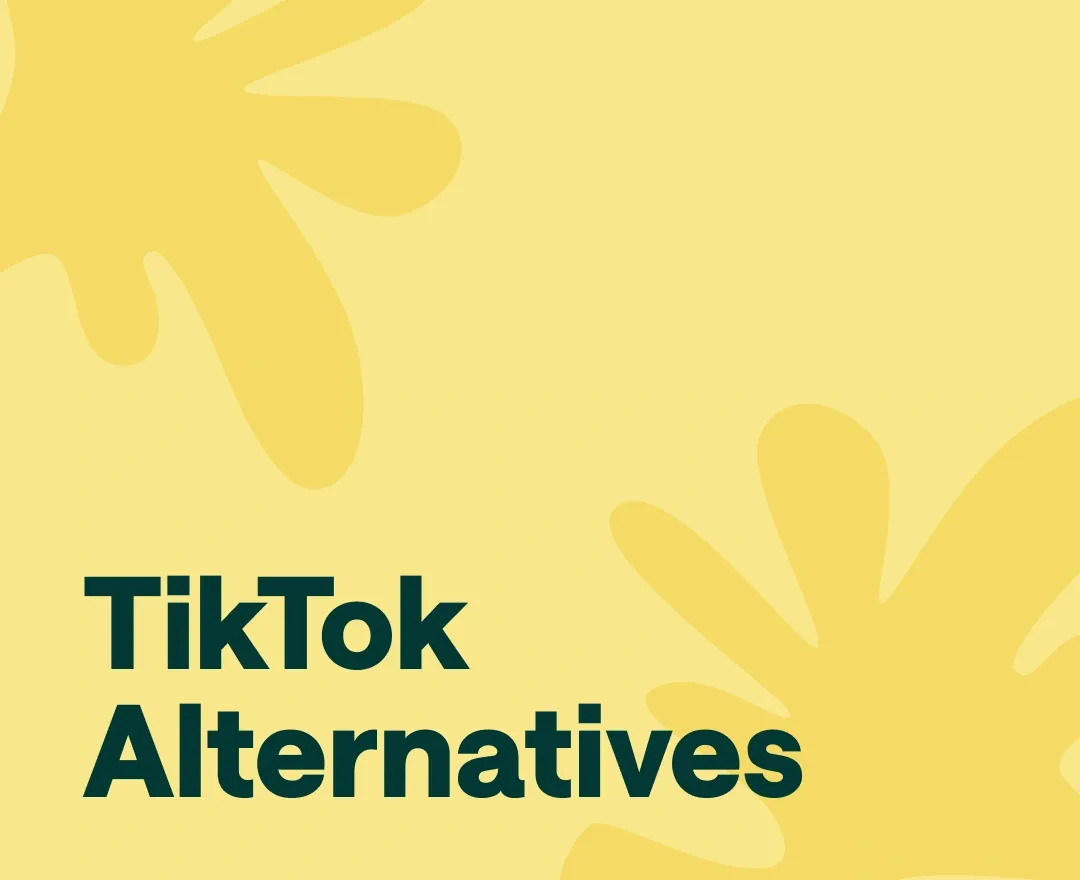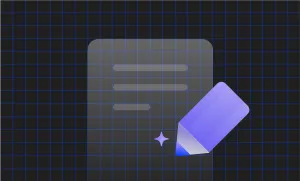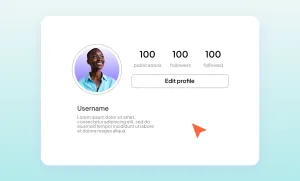What happens when your go-to app for content creation suddenly isn’t so “go-to” anymore?
If you’ve been paying attention to the recent buzz surrounding TikTok bans, you might already be wondering what this means for your content strategy.
But let’s be honest: even without bans, pinning all your creative hopes on one platform has always been risky.
Algorithms shift. Audiences migrate. Entire platforms can disappear faster than a trending dance challenge.
So, where does that leave you as a creator? The answer is simple but powerful: diversification.
In this blog, we’re diving into the best TikTok alternatives for sharing your content and strategies for repurposing your work across platforms.
Why Diversifying Content Platforms Is Key
Imagine you spend weeks perfecting a series of videos. You’ve planned the hooks, edited all the transitions, and nailed that perfect viral moment you were looking for. Then, one day, the platform housing all your hard work gets restricted or, worse, banned in your country. Sounds like a nightmare, right? Unfortunately, it’s a reality many creators have faced (and will face in the future.)
TikTok isn’t the first time this has happened either. Google Podcasts was another big hit for content creators, leaving many podcasters scrambling to migrate their content and rebuild their listener base on new platforms.
This is why you shouldn’t put all your eggs in one social media basket. Diversifying is both a safety net and also another way you could expand your reach to more audiences.
TikTok Alternatives to Share Content in 2025
1) Instagram Reels
Instagram Reels has become one of the strongest contenders for TikTok-style content. With a massive, global user base, it offers the chance to reach just about anyone across the globe. Even without hashtags, Instagram's discovery algorithm pushes your content to people who don’t already follow you, giving creators excellent exposure.
Why It Works:
- Reels not only integrate seamlessly into Instagram’s entire platform, but they've also become the central theme of the app, with an easy way for users to interact with your content through Stories, direct messages, and posts.
- It’s versatile. Creators can experiment with trends, offer quick tutorials, or even repurpose TikTok content without major edits.
Pro Tip: Add captions to your videos to boost engagement (many users scroll with the sound off).
2) YouTube Shorts
YouTube Shorts is a serious player in the short-form video game. It’s part of the larger YouTube platform, which means your Shorts can act as a gateway to your long-form content. The built-in discoverability is unmatched—YouTube’s algorithm works hard to pair your content with the right audience, whether they’re searching for entertainment, education, or inspiration.
Why It Works:
- Shorts are a perfect supplement for your YouTube channel. One viral short can funnel thousands of viewers to your other videos.
- YouTube provides pretty detailed analytic tools so that creators can easily track how their content is performing across formats and refine their strategy.
Pro Tip: Consistency is key. The more Shorts you're able to craft from a single video, the better. One of those is bound to garner more views, and potentially even go viral.
3) Snapchat Spotlight
Snapchat Spotlight is one of the lesser-talked-about platforms but has surprising potential for short-form content creators. It’s geared toward short, entertaining, and engaging clips, and Snapchat also offers monetary incentives for content that performs well.
Why It Works:
- Spotlight is designed for discovery, so your videos can reach users who don’t follow you.
- Its younger audience base is highly engaged, making it a great testing ground for more experimental or playful content.
Pro Tip: Use Snapchat’s built-in tools like AR filters and stickers to make your content stand out and feel native to the platform.
4) Pinterest Idea Pins
Pinterest is often overlooked in conversations about short-form content, but its Idea Pins (formerly known as Story Pins) are perfect for creators in niches like DIY, cooking, fashion, or fitness. Unlike most platforms where posts disappear, Pinterest is built for discoverability and longevity. Creators can easily save your pins, add them to collections, and revisit them months or even years later.
Why It Works:
- Content on Pinterest has a long shelf life. Pins are searchable and saveable, which means your Idea Pins can generate traffic for weeks or months.
- The platform is built for actionable content—tutorials, recipes, and how-to guides thrive here.
Pro Tip: Pair each Idea Pin with a detailed description that includes relevant keywords. This boosts discoverability through Pinterest’s search engine.
5) Facebook Reels
Yes, believe it or not, Facebook is still relevant, especially if your target audience skews slightly older. Facebook Reels work similarly to Instagram Reels but cater to a different demographic. This is your chance to repurpose content with a more family-friendly or informative tone.
Why It Works:
- Facebook’s active user base means your content has the potential to reach people who don’t use Instagram or TikTok.
- Sharing Reels in Groups allows you to tap into highly specific audiences interested in your niche.
Pro Tip: Repurpose your Instagram Reels for Facebook, but tweak captions to be slightly more explanatory or conversational to match the platform’s tone.
6) Emerging Platforms
Clapper, Zynn, and even niche apps like Triller might not have TikTok’s star power, but they’re worth exploring for early mover advantage (and, who knows, now that TikTok is getting banned, Triller might become the no. 1 alternative in the US.) These platforms often reward creators with more reach simply because they’re looking to build a community. Experiment with your content and see where it sticks.
Repurposing Long-Form Content for Short-Form Platforms
Your best short-form content often starts with something much bigger. Think of your long-form content. Be it a YouTube video, a blog post, or even a podcast episode, take a look at the highlights and turn them into bite-sized gems that thrive on short-form platforms.
Step 1) Start with Your Pillar Content
Pillar content is your in-depth, cornerstone work. It could be a 10-minute YouTube video, a detailed how-to blog, or even an hour-long podcast episode. This is where you can dive into your topic, but it’s also where you’ll find endless opportunities to extract smaller bits of value. For example:
- YouTube Video: Break it into 15-30-second clips of key moments, like a killer piece of advice or a funny anecdote.
- Podcast: Pull out soundbites with strong hooks or impactful statements and pair them with captions for Instagram Reels or YouTube Shorts.
- Blog Post: Highlight 3-5 takeaways and turn them into carousel posts or one-liner tips for Twitter or LinkedIn.
Step 2) Find the Content That Sticks
Not every moment is a viral hit waiting to happen. Focus on:
- Emotional moments: Did you make a comment that’s funny, inspiring, or relatable? That could be your hook.
- Actionable tips: Step-by-step advice, life hacks, or tricks perform incredibly well on short-form platforms.
- Strong visuals: Clips that don’t need heavy context but instantly grab attention, like a before-and-after transformation or a unique angle.
Step 3) Keep Your Brand Voice Consistent
While your tone and style might shift slightly depending on the platform, your brand identity should always be recognizable. Use similar colors, fonts, and a consistent personality across all your repurposed content. This is how you can guarantee that whether someone sees you on Instagram, YouTube, or Pinterest, they know it’s you.
Building a Cross-Platform Content Strategy
Each platform serves a different purpose and audience, so your strategy should align with the strengths of each while maintaining a unified brand identity. Here’s how to build a strategy that works across the board:
Step 1) Define Your Goals for Each Platform
Different platforms excel at different things, so trying to achieve the same goal on all of them could lead to some shortcomings. Instead, tailor your objectives to each platform’s strengths.
For instance, Instagram is the ideal space to build a sense of community through interactive features like Stories, Reels, and tools like polls or Q&A stickers. It’s also a visual playground where polished, creative content can shine, whether it’s a well-edited Reel or an aesthetically pleasing carousel post.
Meanwhile, YouTube offers is perfect for establishing authority in your niche through long-form, in-depth content. It could be tutorials, detailed how-tos, video essays, or something else entirely. And with Shorts, you can extend your reach by introducing bite-sized, highly shareable content that leads back to your channel.
Other platforms, like Pinterest and Facebook, cater to more specific needs. Pinterest is the go-to for creators who want their content to have longevity. Its algorithm prioritizes evergreen, visually inspiring content that people save for later reference. On the other hand, Facebook leans toward connecting with older audiences and niche communities through Groups or targeted Reels.
Even Snapchat can serve a purpose, especially if your content leans toward playful, behind-the-scenes moments that resonate with younger, highly engaged users.
By knowing why you’re on each platform, you can create content that aligns with those goals.
Step 2) Customize, Don’t Copy
While it might be tempting to post the same video across platforms without much thought, audiences on each platform have different expectations for how they consume content.
For example, a TikTok video thrives on spontaneity. Unpolished, trend-driven content shot with minimal effort. If you were to adapt that same idea for Instagram Reels, you might slow it down just slightly, focus more on aesthetics, and pair it with a caption that’s aspirational or invites discussion.
On YouTube Shorts, the same content might work better with a stronger focus on storytelling and a clear hook at the beginning, designed to keep viewers engaged for the platform’s longer retention demands.
The goal isn’t to create entirely new content for every platform but to tweak the pacing, tone, or visual presentation so it feels like it belongs there. The more intentional your repurposing, the more natural your content will feel (and the better it will perform.)
Step 3) Plan Your Content Calendar
A cross-platform strategy needs structure, and that starts with a solid content calendar. Here’s how to map it out:
- Central Theme: Pick a monthly or weekly theme that ties your content together. For example, if your focus is “productivity hacks,” all platforms can have content tied to that topic.
- Content Distribution: Schedule pillar content (like a YouTube video or blog) early in the week, followed by short-form snippets repurposed from it.
- Engagement Windows: Plan time to interact with your audience, whether it’s responding to comments on Instagram or hosting a YouTube Live.
A tool like Notion, Trello, or ContentStudio can help you visualize and manage this calendar across platforms.
Step 4: Maintain a Consistent Brand Identity
While each platform requires a unique approach, your audience should never feel like they’re interacting with a completely different creator when they switch from your Instagram to your YouTube channel. Here’s how to stay consistent:
- Visuals: Use similar color schemes, fonts, and logos across platforms.
- Tone of Voice: Whether your tone is casual, professional, or quirky, make sure it’s consistent in your captions, videos, and posts.
- Messaging: Your core values and mission should shine through no matter where your audience finds you.
Step 5: Engage, Don’t Just Post
We can practically say that editing and posting are two-thirds of the job. The other third should go to engaging with the people reacting to your content. Make sure you dedicate time to:
- Responding to Comments: Make your followers feel heard.
- Collaborating: Partner with other creators to tap into new audiences.
- Community Building: Come up with challenges (either for your audience or for yourself) or streaming live sessions to create a deeper connection with your audience.
Step 6: Funnel Your Audience Across Platforms
The ultimate goal is to create an entire ecosystem where your audience can interact with you on multiple platforms. For example:
– Use Instagram Stories to tease your YouTube video.
– Add Pinterest links that drive traffic to your blog.
– Embed TikTok or Instagram content in your website or newsletter.
This not only maximizes your content’s reach but also makes your brand feel omnipresent to your audience.
Done right, thinking of a cross-platform strategy could just be the key to amplifying your reach, growing your brand, and ensuring that no single algorithm or platform dictates your success.
How to use Podcastle to Shape and Repurpose Content Across Socials
With Podcastle, creating and repurposing content for multiple platforms is faster and easier than ever. Its drag-and-drop editor lets you trim, tweak, and refine audio and video in seconds, while instant transcription helps you create captions or text-based posts effortlessly.
Need to scale content quickly? Podcastle’s AI voiceovers and voice cloning let you generate voiceovers or create new variations without re-recording. Plus, its AI tools enhance audio and video quality, ensuring every clip looks and sounds professional, no matter where it’s shared.
From podcast episodes to short-form videos, Podcastle transforms your workflow, letting you create and repurpose content for socials in record time.








